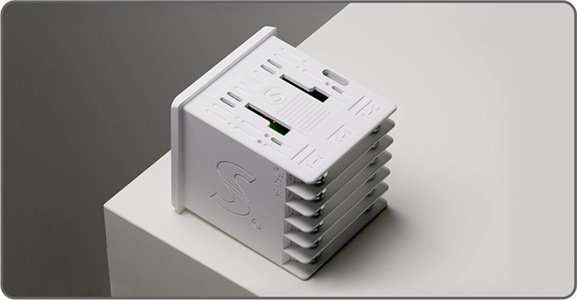How to Install and Set Up a Temperature Controller: A Step-by-Step Guide
Precision temperature regulation is increasingly necessary in today's industrial landscape for maintaining quality and safety across various processes, with industry experts reporting that over 70% of manufacturing/processing operations depend on precise temperature regulation for quality results and operations efficiency. In this article we offer an in-depth guide for installing and configuring temperature controllers backed up with expert insights from reliable sources.Click to Sinny Temperature Controllers Technical Support.
1. Understanding Temperature Controllers
Definition
A temperature controller is an electronic device designed to regulate and maintain an environment or system within a desired temperature range, by continuously measuring current temperature levels against setpoint temperatures, then making adjustments as necessary to either heat or cool mechanisms in response.
Types of Temperature Controllers
On/Off Controllers : They offer cost-effective temperature regulation where exact control is not essential, such as for applications where precise regulation may not be essential.
Proportional Controllers: provide more stable regulation by adapting output proportionally with temperature fluctuations.
PID Controllers: these controls provide accurate and stable temperature regulation by integrating proportional, integral, and derivative actions. A typical temperature controller system contains:
Components of a Temperature Controller System
A typical temperature controller system comprises:
Sensors: Devices that measure the current temperature (e.g., thermocouples, RTDs).
Controller Unit: The brain of the system that processes the sensor inputs and controls the output.
Actuators: Mechanisms that adjust the temperature (e.g., heaters, coolers).
2. Installation Considerations
Assess Your Needs
Prior to selecting a temperature controller for your application, carefully assess its requirements. These could include temperature range, accuracy, response time and control method - for instance a pharmaceutical storage facility will have different needs than plastic molding processes.
Select the Appropriate Temperature Controller
Once your needs have been identified, find a temperature controller to meet them. A PID controller may offer greater precision while on/off controllers may suffice in less demanding applications. Make sure the chosen model can communicate effectively with existing systems and sensors before making your choice.
Safety Precautions
Prior to installation, take essential safety steps in order to prevent accidents from arising. Disconnect power sources that feed into the system; use suitable personal protective equipment (PPE); and adhere to any specific manufacturer guidelines regarding safety issues.
3. Tools and Materials Needed
To install a temperature controller, the following materials and tools will be necessary:
Screwdrivers (flathead and Phillips)
Wire strippers and cutters
Multimeter
Mounting brackets and screws
Insulation tape
Required Materials
Ensure you have the following materials:
Appropriate wiring for connections
Temperature sensors
Connectors and terminals
User manual of the temperature controller

4. Step-by-Step Installation Guide
Step 1: Unpacking and Inspecting the Controller
To get the installation underway, it is first important to unpack and inspect the temperature controller thoroughly, looking out for physical damages as well as making sure all parts and accessories as listed by manufacturer have been included in its box.
Step 2: Mounting the Controller
To mount your controller for operation and monitoring purposes, use the provided mounting brackets and screws to securely fasten it to panels or walls.
Step 3: Wiring the Controller
Carefully follow the wiring diagram provided in your user manual when wiring up your controller. Ensure the appropriate voltage and polarity when connecting power to it via wire strippers before connecting wires directly onto their terminals with wire snips or cable cutters.
Step 4: Connecting Sensors
To properly measure temperature readings and ensure accurate temperature measurements are captured by this project, attach temperature sensors securely and positioned correctly onto their designated input terminals on the controller. Ensure they can accurately and precisely record information such as ambient air temperatures.
Step 5: Powering Up the System
Once all connections are secured, switch on your temperature controller system. Check its display and indicators to make sure everything is functioning as planned; referring back to your user manual may help when initial error messages or troubleshooting steps arise.
5. Setting Up the Temperature Controller
Initial Configuration
Access the configuration menu of the controller through the user interface. Set the desired temperature range, control method (e.g., on/off, PID), and other parameters as per your application requirements.
PID Tuning
PID tuning is key for optimal performance of PID controllers. Make adjustments based on how quickly the system responds to temperature changes by altering proportional, integral, and derivative settings accordingly; most controllers feature auto-tune features to make this easier.
Testing and Calibration
After configuring, thoroughly test and calibrate the controller by subjecting it to different temperatures within its desired range. Calibrate as necessary in order to ensure accurate readings and control; use an accurate thermometer as verification of this step.
6. Troubleshooting Common Issues
Common Installation Problems
Some common issues during installation include incorrect wiring, loose connections, and incompatible sensors. Double-check all connections and refer to the troubleshooting section of the user manual to resolve these problems
Operational Issues
Operational issues, like irregular temperature readings or control failure, may often be traced back to sensor faults or incorrect settings. When in doubt, it's a good idea to inspect sensors and verify controller settings to make sure they fit your application requirements.
7. Maintenance and Safety Tips
Regular Maintenance
To keep the temperature controller operating in optimal condition, conduct routine maintenance checks. Inspect the wiring connections for signs of wear or damage; clean sensor probes regularly; ensure there are no dust particles present within its enclosures; as well as make sure that there are no other obstructions present which might prevent its proper function.
Safety Tips
Follow these safety guidelines to ensure safe operation and maintenance:
Always disconnect the power supply before performing any maintenance.
Use insulated tools and wear appropriate PPE.
Regularly update your safety training and adhere to industry standards.
- How to Maintain and Calibrate Your Temperature Controller: A Comprehensive Guide
- How Temperature Controllers Work: A Comprehensive Guide





















